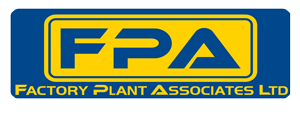Versa-Lift Industrial Forklift
The Versa-Lift is a unique, heavy-duty forklift which is specifically designed for riggers moving heavy machinery. A great feature of these forklift trucks is that the lifting frame extends, which allows us to lift greater capacities than standard. The mast uses hydraulics rather than chains for more reliable lifting up to 60 tons. Using two Versa-Lift forklifts together, as in the video below, provides a simple way to lift heavy machinery.
(Versa-Lift 40/60 in action removing a section of an old furnace)
Toe Jacks
These tools are commonly used for lifting and lowering machines to allow machine skates to roll underneath. They are heavy-duty hydraulic jacks that can work at various angles. The “toe” of the jack enters at a low clearance, ideal for lifting machinery close to the floor.
Using jacks allows us to raise the machinery with minimal effort while keeping it steady and secure. The jacks lock at the desired height, giving us full control over raising and lowering.
Machine Skates
Machine skates allow us to move heavy equipment quickly across flat and smooth surfaces. They consist of a flat base and rollers that reduce friction. Some of our skates can lift loads of up to 70 tons.
While skates cannot jack up heavy loads from the ground or lift anything into position, we use other tools, such as forklifts, toe-jacks and telehandlers, to raise items before positioning the skates underneath. We can then push the skates to the desired location and use similar tools to lift the load and remove the skates.
(Using Machine Skates to move a 20-ton machine into place.)
Hand Pallet Trucks
A hand-operated pallet truck works much like machine skates, but for smaller loads (~5 tons). The handle works as a jack lever to raise the forks using the hydraulic control. This is ideal for quickly moving packed parts and accessories without strain or risk of injury.
